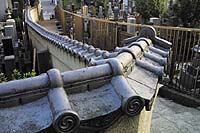Switched On
Back to Contents of Issue: March 2002
|
|
|
|
by Bernard Morales |
|
 IT IS ALWAYS A delight-- and a dilemma -- to test a new camera, whether film or digital, especially because I have been using 35-mm Fuji film and Canon cameras for practically my entire career as a professional photographer, but I have a history of testing new equipment. I was one of the first to test the CCD (charge coupled device) television cameras in the UK in the 1980s, and so for a couple of decades now I have been haunted by the recurring question, "Can digital produce quality equal to film?" IT IS ALWAYS A delight-- and a dilemma -- to test a new camera, whether film or digital, especially because I have been using 35-mm Fuji film and Canon cameras for practically my entire career as a professional photographer, but I have a history of testing new equipment. I was one of the first to test the CCD (charge coupled device) television cameras in the UK in the 1980s, and so for a couple of decades now I have been haunted by the recurring question, "Can digital produce quality equal to film?"
On one level, the argument is absurd. Digital images have constantly improved, and digital cameras no longer have to prove themselves to photographers. But I have always favored the richness of film; I would be a hard sell. I had the chance to be guided through my first steps with the 3.25 megapixel EOS-D30 by a professional Japanese photographer, Keiju Sato. His fascination with digital cameras began in the early 1990s, and he is one of the few photographers manufacturers entrust to test their latest models before they put them on the market. Sato gave me a short initiation into the cameraÕs basic functions, which helped enormously and got me interested in testing the camera out. My experience as a photographer and reporter has taught me that to really test out a product, you need to perform an assignment with it. This forces you to test the product to its limits and keeps you from leaping to judgment too soon. The photo with this feature was taken with the EOS-D30. Digital cameras have some great advantages over conventional ones: Photographers can switch from film speed equivalents of 100 to 1600 ASA without having to reload a roll of film, for example. The digital EOS main menu is easy to use and allows for explanations in four different languages, including my native French. The multitude of options open to the photographer seems endless, but thankfully, Canon has also included manual mode. It would be possible for a novice to understand and operate the camera within a week through trial and error. The LCD display is clear, and the 340-MB IBM Microdrive I used can store up to 200 high-resolution photos, which can be individually or globally erased at the touch of a button. Canon normally supplies a 16-MB CompactFlash card, which can manage 12 images at the highest quality. For most folk to fully comprehend the intricacies and versatility of this high-tech camera would probably take a month. From easily adjustable lateral focusing to white balance settings, the range of possibilities open to the photographer widens as one understands the more advanced electronic minutiae of the EOS-D30. What really interested me was whether the digital camera would meld with my personal vision and my ability to record images. Would I succumb to the technical ease of snapping digital photos and end up producing more digital trash to be dumped on the massive garbage pile of anonymous commercial photography? Or at least those were the kinds of anti-digital thoughts running through my head as I began to play with the EOS. To my great surprise, after two days, my shooting, framing, photo composition and image cropping within the frame when using the EOS were very similar to my work with film. I handled the camera very much like the 35-mm Canon I normally use, with the only noticeable drawback being the somewhat distracting amount of options available on the digital camera. After two days, however, I could feel my artistic impulses flowing with the camera, and my reflexes and mental imaging beginning to work in synch with the technology. I must admit I was let down when it came to reproducing the digital photos; the prints looked crisp and fresh, but they were not exactly what I had envisioned. There is a certain lack of depth due to the electronic process, and the saturation of the primary colors is different than on film. Deep reds lose their magical appeal, yellows somewhat wash off, yet the balance between tungsten light and daylight seems to be less extreme than on film, therefore allowing greater flexibility. The real drawback came when I asked if I could enlarge photos to 1.8 by 1.3 meters, the size I often use for exhibitions. The Canon EOS-D30, perhaps the best of its kind on the market today, does not let you reproduce very large prints of sufficient quality. But just wait -- the next generation of digital cameras is expected to let photographers enlarge photos to over two meters in width. I may still love film, but I will no longer rant about the problems of digital. I would definitely consider using a digital camera for my work in the future -- under certain circumstances @ |
|
Note: The function "email this page" is currently not supported for this page.





